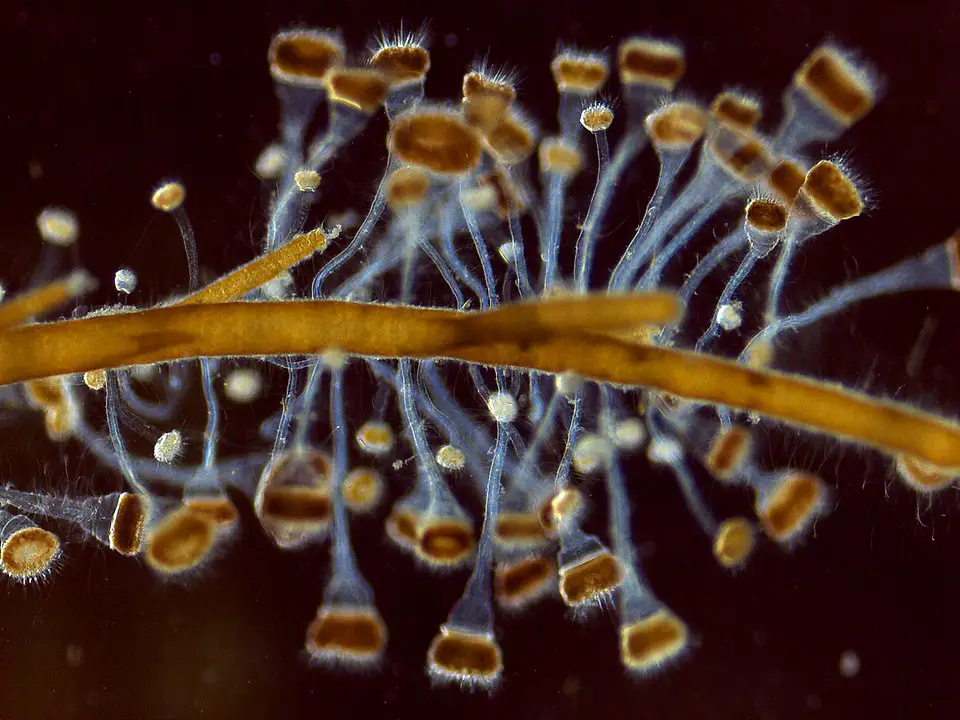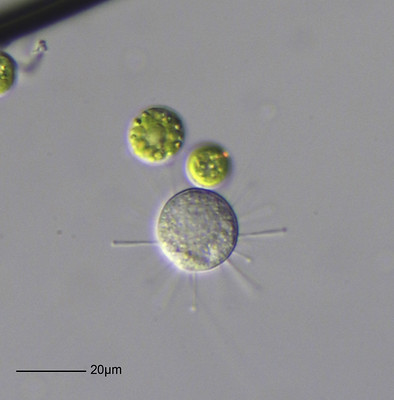Suctoria
Examples, Characteristics, Classification and Habitat
Overview
Commonly found in aquatic environments, Suctoria is a subclass of Protozoa that make up about 7 percent of all ciliates. Based on a number of studies, there are many genera of the subclass Suctoria consisting of numerous species (very diverse).
While Suctorians have been shown to be parasitic in some cases, they are, for the most part, carnivorous in nature. Despite the wide variety of Suctorians, they also share a number of unique morphological structures that support their survival.
Classification
· Infrakingdom: Alveolata - Single-celled eukaryotes that have adopted to various modes of nutrition
· Phylum: Ciliophora - Multinucleate organisms characterized by the presence of cilia on their surface
· Subphylum: Intramacronucleata - Characterized by a unique manner in which their macronucleus divide during cell division (binary fission)
· Class: Phyllopharyngea - Highly specialized ciliates that move from one point to another using cilia (In these organisms, the cilia is typically located at the ventral surface)
· Subclass: Suctoria
· Species: Acineta tuberosa, Trichophrya epistylidis, and P. sandi etc
Suctoria Characteristics
Reproduction
As compared to many of the other ciliates that reproduce through binary fission, Suctorians either produce through budding (asexual reproduction) or conjugation (sexual reproduction).
Budding
For Suctorians, budding is the primary mode of reproduction. This may occur internally or externally. As compared to external budding where the bud (new cell) develops externally, a bud develops in a pouch in internal budding. Here, cell components of the parent cell start dividing in preparation.
The new bud then develops within the pouch of the parent cell where it continues growing. Ultimately, however, the bud escapes the pouch (by pinching off) as a free cell. At this stage, the new cells (free-swimming bud) use cilia to swim freely before settling on a substrate of choice.
Conjugation
Apart from budding, Suctorians are also capable of reproducing sexually through a process known as conjugation. During conjugation, two cells join together (side by side) and exchange nuclear material once they are joined. Following gamete pairing (following nuclear exchange).
The conjugant formed through this process contains genetic material from different cells and continues dividing through budding in favorable environmental conditions.
This mode of reproduction is rare and mostly occurs during unfavorable environmental conditions. Given that it involves an exchange of nucleate material between two cells, it allows for the shuffling (mixing) of hereditary traits.
Morphological Characteristics
As already mentioned, Suctoria species are unicellular eukaryotic organisms. As such, they contain membrane-bound organelles such as the macronucleus and micronucleus. Apart from the dimorphic nucleus, the contractile vacuole is the other visible part of the cell.
Given that the group consists of many species, members of Suctoria range between 15 and 30um in length and about 9um in width. The body, which tends to branch, may be globose, oval, or bell-shaped. For some members of Suctoria, the cell body is covered by a shell-like protective covering known as lorica.
Apart from the shell covering and dimorphic nucleus, the numerous and conspicuous tentacles also serve as the most defining characteristics of these cells. In such species as Flectacineta isopodensis, these tentacles stick out through the lorica opening when viewed under the microscope.
Depending on the organism these tentacles may appear pointed or knobbed at their tips. The tentacles are also characterized by contractile sheaths covering their entire length as well as inner tubes consisting of ectoplasm.
* Suctoria tentacles are supported by microtubules and phyllae.
* Among some species, the tentacles are well distributed over the entire body of the organism thus covering much of the cell body.
Given that these organisms lack a mouth part, the tentacles are used to not only capture prey, but also to absorb food material. At the tip of the tentacles, Suctoria possess toxic extrusomes known as haptocytes that serve to attach to prey (e.g. smaller Protozoa and Rotifers).
After coming into contact with these tentacles, the prey is paralyzed which makes it easier for Suctorians to suck their body content (Suctorians suck body content of the prey using the tentacles). These food contents (cytoplasm) are then digested in the food vacuole and absorbed.
Apart from the tentacles, Suctorians also possess a thin stalk that may range between 9 and 25um in length depending on the species. This stalk may be covered by thin transverse striations. Using this stalk (non-contractile), they are able to attach themselves to the substrate of choice.
In the event of unfavorable surrounding conditions, they have been shown to break away from the stalk and attach onto other substrates where conditions prove favorable.
As compared to the mature cells, newly formed cells possess cilia that allow them to swim freely from one point to another. Once they attack onto a favorable substrate, they become sessile as they lose the redundant cilia.
Before they attach onto the substrate, they start quickly developing the stalk and tentacles for feeding purposes. Therefore, there are several morphological differences between the young cells (known as swarmers) and mature Suctorians.
Apart from various stationary species in their respective habitats (fresh and marine water), some species have also been shown to be epibionts on crustaceans. As such, they use their stalk to attach to crustaceans (e.g. amphipods and cirripeds, etc) in their environment.
Usually, Suctorians attach to the non-motile parts of the crustaceans (particularly the calcified surface of the exoskeleton). This allows them to remain attached to the host without any disturbances as those resulting from the high beating rates of the appendages. Depending on the part of the host they attach to, some of the Suctorians exhibit parasitism.
* In some hosts, some Suctoria species have been shown to not only parasitize, but also cause diseases in their hosts.
* Of about 531 species of Suctorians identified so far, about 268 species are epibionts of crustaceans.
Habitats
According to many studies, Suctorians are commonly found in both fresh and salty water environments. However, they can also be found in various damp/wet environments with sufficient food sources (prey such as other ciliates).
Although they can exhibit parasitism in their hosts, for the most part, a majority of the species have been shown to live in harmony with many of their hosts.
Apart from marine and freshwater systems, Suctorians are also found in wastewater systems. This is largely due to the high population of bacteria and oxygen concentration that create favorable conditions for the organisms. For this reason, Suctorians are often used as indicators of water quality.
Return from learning about Suctoria to MicroscopeMaster home
References
Agarwal V.K. (2017). Zoology for Degree Students.
Corliss, John O. (2014). Suctoria. Department of Zoology, University of Maryland, College Park, Maryland.
Fernandez-Leborans, Yukio Hanamura, and Keizo Nagasaki. (2002). A New Suctorian, Flectacineta isopodensis (Protozoa: Ciliophora) Epibiont on Marine Isopods from Hokkaido (Northern Japan).
Mahadeva Subramania Mani. (2005). Progress in Invertebrate Zoology.
Links
https://www.ebsbiowizard.com/resources/micro-gallery/suctoria/
Find out how to advertise on MicroscopeMaster!






